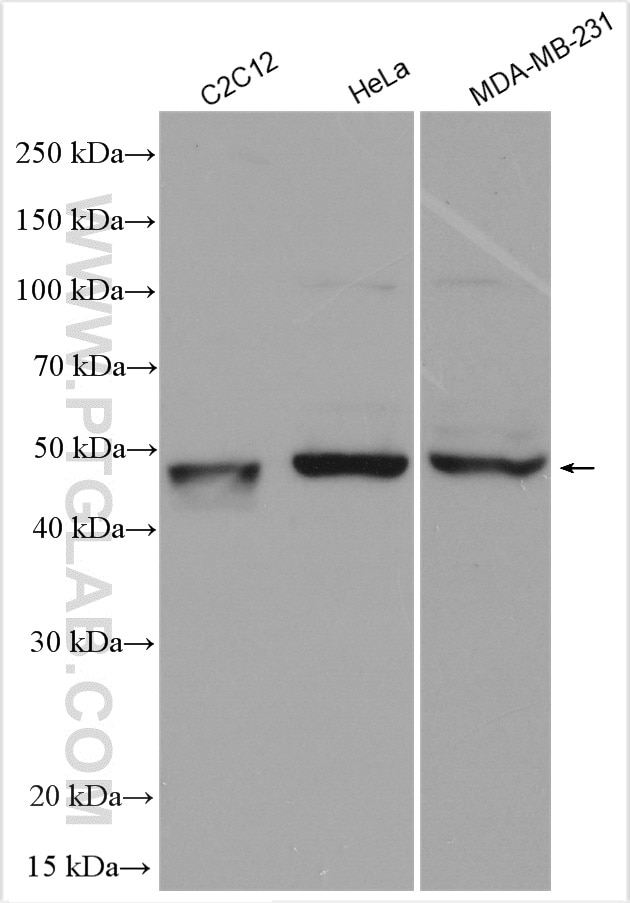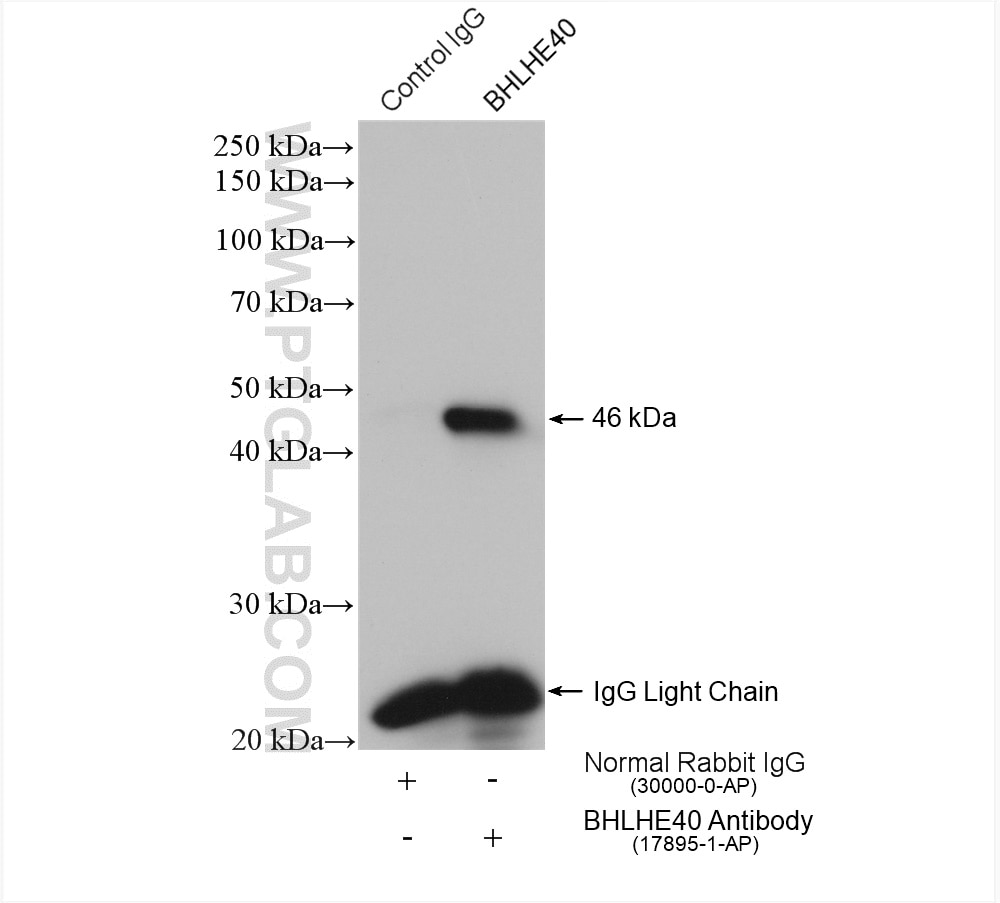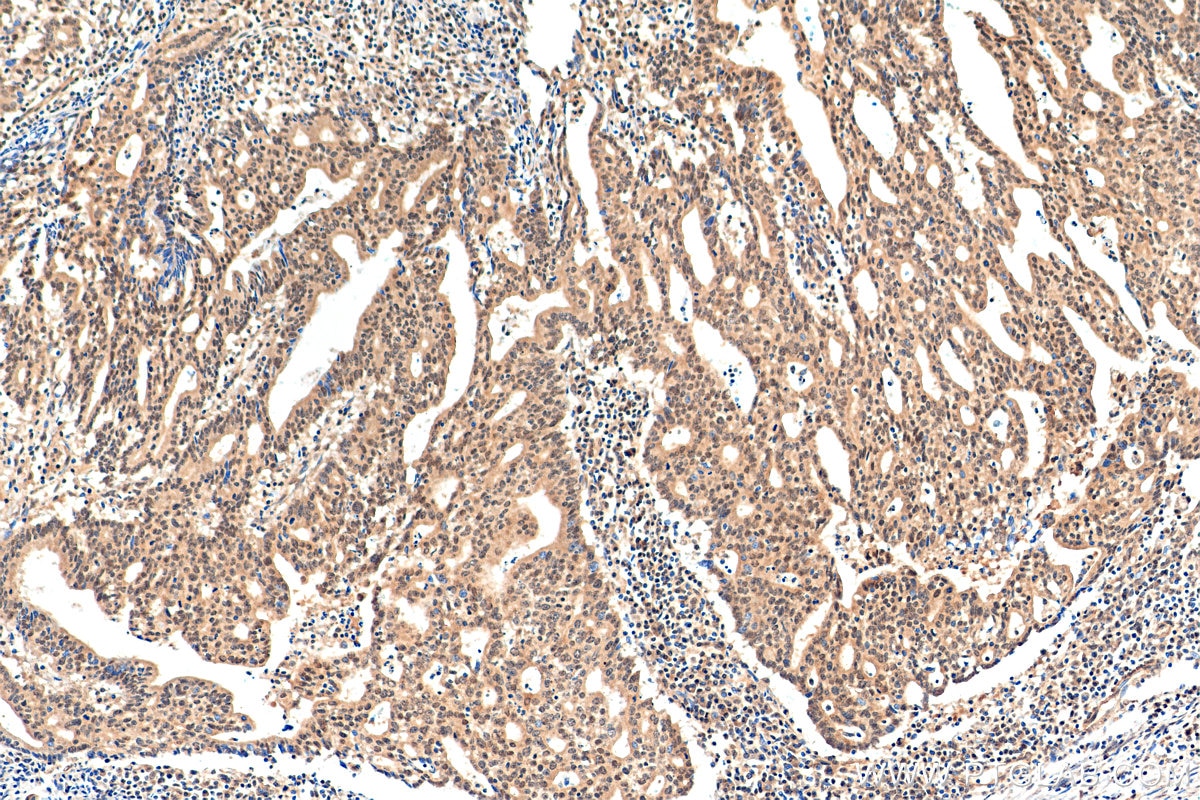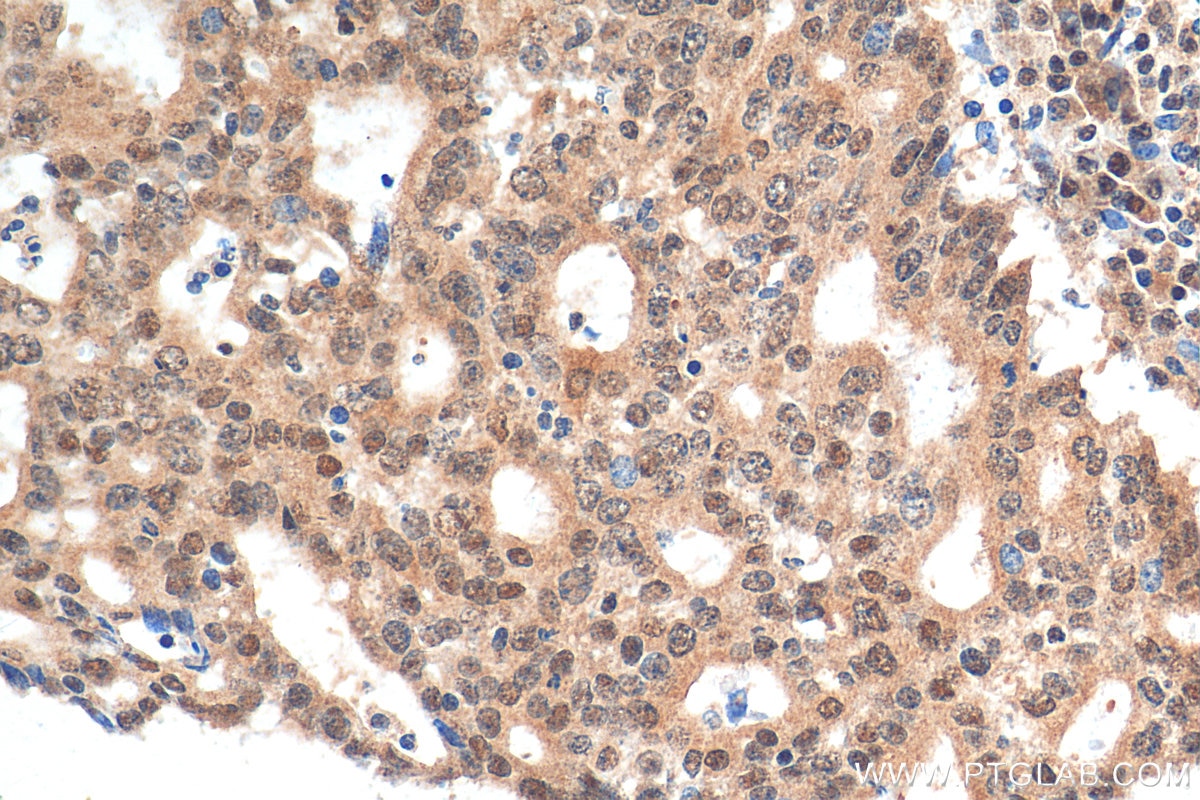- Featured Product
- KD/KO Validated
BHLHE40 Polyklonaler Antikörper
BHLHE40 Polyklonal Antikörper für IHC, IP, WB, ELISA
Wirt / Isotyp
Kaninchen / IgG
Getestete Reaktivität
human, Maus, Ratte
Anwendung
WB, IP, IHC, IF, ELISA
Konjugation
Unkonjugiert
Kat-Nr. : 17895-1-AP
Synonyme
Galerie der Validierungsdaten
Geprüfte Anwendungen
| Erfolgreiche Detektion in WB | C2C12-Zellen, HeLa-Zellen, MDA-MB-231-Zellen |
| Erfolgreiche IP | HeLa-Zellen |
| Erfolgreiche Detektion in IHC | humanes Endometriumkarzinomgewebe Hinweis: Antigendemaskierung mit TE-Puffer pH 9,0 empfohlen. (*) Wahlweise kann die Antigendemaskierung auch mit Citratpuffer pH 6,0 erfolgen. |
Empfohlene Verdünnung
| Anwendung | Verdünnung |
|---|---|
| Western Blot (WB) | WB : 1:1000-1:4000 |
| Immunpräzipitation (IP) | IP : 0.5-4.0 ug for 1.0-3.0 mg of total protein lysate |
| Immunhistochemie (IHC) | IHC : 1:50-1:500 |
| It is recommended that this reagent should be titrated in each testing system to obtain optimal results. | |
| Sample-dependent, check data in validation data gallery | |
Veröffentlichte Anwendungen
| KD/KO | See 2 publications below |
| WB | See 9 publications below |
| IHC | See 2 publications below |
| IF | See 2 publications below |
| IP | See 1 publications below |
Produktinformation
17895-1-AP bindet in WB, IP, IHC, IF, ELISA BHLHE40 und zeigt Reaktivität mit human, Maus, Ratten
| Getestete Reaktivität | human, Maus, Ratte |
| In Publikationen genannte Reaktivität | human, Maus, Ratte |
| Wirt / Isotyp | Kaninchen / IgG |
| Klonalität | Polyklonal |
| Typ | Antikörper |
| Immunogen | BHLHE40 fusion protein Ag12236 |
| Vollständiger Name | basic helix-loop-helix family, member e40 |
| Berechnetes Molekulargewicht | 412 aa, 46 kDa |
| Beobachtetes Molekulargewicht | 46-50 kDa |
| GenBank-Zugangsnummer | BC082238 |
| Gene symbol | BHLHE40 |
| Gene ID (NCBI) | 8553 |
| Konjugation | Unkonjugiert |
| Form | Liquid |
| Reinigungsmethode | Antigen-Affinitätsreinigung |
| Lagerungspuffer | PBS mit 0.02% Natriumazid und 50% Glycerin pH 7.3. |
| Lagerungsbedingungen | Bei -20°C lagern. Nach dem Versand ein Jahr lang stabil Aliquotieren ist bei -20oC Lagerung nicht notwendig. 20ul Größen enthalten 0,1% BSA. |
Hintergrundinformationen
BHLHE40 (Basic Helix-Loop-Helix Family Member E40), also known as BHLHB2, STRA13, DEC1, or SHARP2, is a member of the basic helix-loop-helix (bHLH) protein family, a large superfamily of transcriptional regulators expressed in many organisms. BHLHE40 is known to regulate a wide variety of essential cellular processes, including cell cycle, cellular proliferation, programmed cell death, cellular development and differentiation, as well as circadian rhythms (PMID: 34551158). It is reported that BHLHE40 is overexpressed in gastric, breast, and brain tumors; and downregulated in colorectal, esophageal, pancreatic and lung cancer (PMID: 32577154).
Protokolle
| Produktspezifische Protokolle | |
|---|---|
| WB protocol for BHLHE40 antibody 17895-1-AP | Protokoll herunterladen |
| IHC protocol for BHLHE40 antibody 17895-1-AP | Protokoll herunterladen |
| IP protocol for BHLHE40 antibody 17895-1-AP | Protokoll herunterladen |
| Standard-Protokolle | |
|---|---|
| Klicken Sie hier, um unsere Standardprotokolle anzuzeigen |
Publikationen
| Species | Application | Title |
|---|---|---|
Front Cell Dev Biol Bhlhe40/Sirt1 Axis-Regulated Mitophagy Is Implicated in All-Trans Retinoic Acid-Induced Spina Bifida Aperta.
| ||
Ann N Y Acad Sci LncRNA-ES3 inhibition by Bhlhe40 is involved in high glucose-induced calcification/senescence of vascular smooth muscle cells. | ||
Front Cardiovasc Med 17β-Estradiol Inhibits Proliferation and Oxidative Stress in Vascular Smooth Muscle Cells by Upregulating BHLHE40 Expression.
| ||
Biochem Biophys Res Commun Loss of circadian protein TIMELESS accelerates the progression of cellular senescence. | ||
J Physiol Biochem Long noncoding RNA SNHG1 alleviates high glucose-induced vascular smooth muscle cells calcification/senescence by post-transcriptionally regulating Bhlhe40 and autophagy via Atg10 | ||
Front Cardiovasc Med Cardiac-specific knockdown of Bhlhe40 attenuates angiotensin II (Ang II)-Induced atrial fibrillation in mice |





